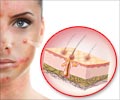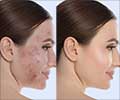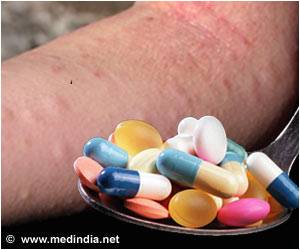- Differential diagnosis and management of hyperpigmentation - (https://pubmed.ncbi.nlm.nih.gov/33999447/)
- Pigmentation Disorders: Diagnosis and Management - (https://pubmed.ncbi.nlm.nih.gov/29431372/)
- Hyperpigmentations [Hyperpigmentation] - (https://pubmed.ncbi.nlm.nih.gov/31537319/)
- Skin Pigmentation Types, Causes and Treatment - A Review - (https://www.ncbi.nlm.nih.gov/pmc/articles/PMC10304091/)
- Dermatology: how to manage facial hyperpigmentation in skin of colour - (https://www.ncbi.nlm.nih.gov/pmc/articles/PMC9165630/)
About
Hyperpigmentation, a common dermatological concern, refers to the darkening of skin in patches. This is caused by excess melanin production(1✔ ✔Trusted Source
Differential diagnosis and management of hyperpigmentation
Go to source). It can affect individuals of all skin types and ages, leading to concerns about appearance and self-esteem. Understanding the causes and treatment options for hyperpigmentation is essential to achieving a clearer, more even complexion.
Did You Know?
Ancient Egyptians used sour milk baths to lighten their skin, a practice believed to have been an early attempt at treating hyperpigmentation.What is Hyperpigmentation?
Melanin is the pigment responsible for skin color. Excess melanin production can be triggered by various factors, including sun exposure, hormonal changes, skin injuries, genetics, and certain skin disorders. This leads to the appearance of dark patches on the skin known as hyperpigmentation. While hyperpigmentation can affect individuals of all skin types and ages, it is more commonly observed in individuals with darker skin tones.
Types of Hyperpigmentation
There are several types of hyperpigmentation, each with its distinct characteristics and causes(2✔ ✔Trusted Source
Pigmentation Disorders: Diagnosis and Management
Go to source):
Sun-Induced Hyperpigmentation:
Also known as solar lentigines or age spots, sun-induced hyperpigmentation occurs as a result of prolonged sun exposure. UV radiation stimulates melanocytes, leading to the formation of dark spots on areas of the skin that are frequently exposed to sunlight, such as the face, hands, arms, neck and shoulder.Post-Inflammatory Hyperpigmentation (PIH):
PIH is a common type of hyperpigmentation that occurs following skin inflammation or injury. Conditions such as acne, eczema, psoriasis, and allergic reactions can trigger inflammation, leading to the production of excess melanin and the development of dark spots.Melasma:
Melasma is a condition characterized by the appearance of symmetrical patches of darkened skin, typically on the face. Hormonal changes, such as those associated with pregnancy, hormonal contraceptives, or hormone replacement therapy, can trigger melasma, leading to the formation of dark patches on the forehead, cheeks, upper lip, and chin.Freckles:
Freckles are small, flat spots that develop on sun-exposed areas of the skin, such as the face, arms, and shoulders. They are caused by an increase in melanin production in response to sun exposure and are more commonly observed in individuals with fair skin.Understanding the different types of hyperpigmentation is essential for accurately diagnosing and treating the condition. Each type may require a tailored approach to treatment based on its underlying cause and severity. Consulting with a dermatologist can help determine the most appropriate treatment plan for managing hyperpigmentation and achieving clearer, more even-toned skin.
Causes of Hyperpigmentation
Hyperpigmentation, characterized by the darkening of patches or spots on the skin, can arise from various factors, including:
Sun Exposure:
Prolonged exposure to ultraviolet (UV) radiation from the sun is one of the primary causes of hyperpigmentation. UV rays stimulate melanocytes, the pigment-producing cells in the skin, leading to an increase in melanin production. This excess melanin accumulates in the skin's upper layers, resulting in the formation of dark spots or patches.Hormonal Changes:
Hormonal fluctuations can trigger or exacerbate hyperpigmentation, particularly in women. Pregnancy, hormonal contraceptives, and hormone replacement therapy can all influence melanin production and distribution in the skin. Conditions like melasma, characterized by the development of dark patches on the face, are often associated with hormonal changes.Skin Injuries:
Skin trauma, such as acne breakouts, cuts, burns, or other injuries, can lead to post-inflammatory hyperpigmentation (PIH). Inflammatory responses triggered by these injuries stimulate melanocytes, causing them to produce excess melanin. As a result, the affected areas of the skin become darker than the surrounding tissue.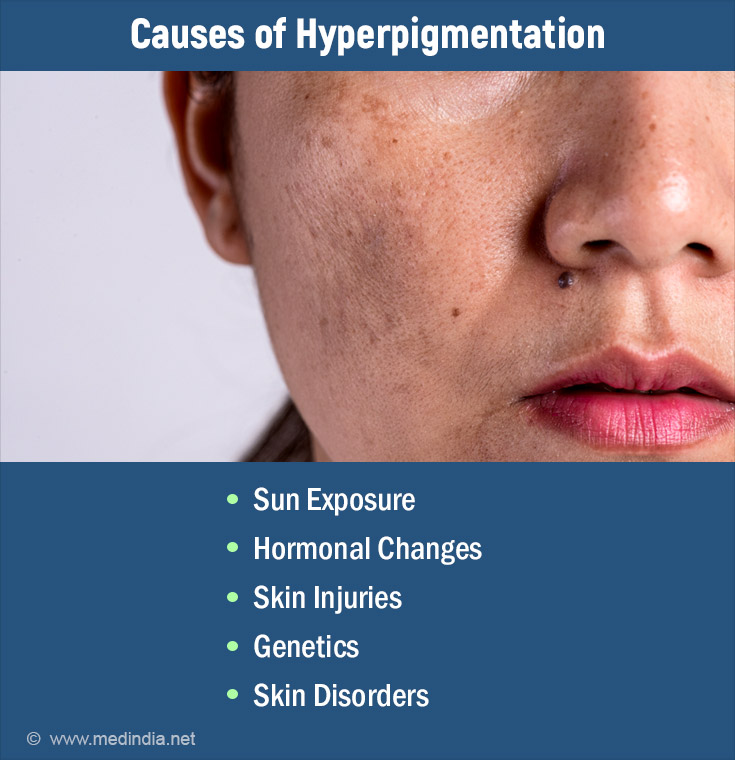
Genetics:
Genetic factors can play a role in predisposing individuals to hyperpigmentation. Some people may have inherited genes that influence melanin production or distribution, making them more susceptible to developing dark spots or patches in response to various triggers.Skin Disorders:
Certain skin conditions, such as dermatitis, eczema, psoriasis, and acne, can disrupt normal melanin production and distribution, leading to changes in pigmentation. Inflammatory skin disorders, in particular, can contribute to the development of post-inflammatory hyperpigmentation (PIH) following episodes of skin inflammation or irritation.Medications:
Certain medications, such as antimalarial drugs, antibiotics, and chemotherapy agents, can cause hyperpigmentation as a side effect. These medications may disrupt melanin synthesis or affect melanocyte function, leading to changes in skin pigmentation(3✔ ✔Trusted SourceHyperpigmentations [Hyperpigmentation]
Go to source).
Symptoms of Hyperpigmentation
Hyperpigmentation manifests as the presence of dark patches or spots on the skin, which exhibit varying characteristics in terms of size, shape, and intensity. These pigmented areas may appear as(4✔ ✔Trusted Source
Skin Pigmentation Types, Causes and Treatment - A Review
Go to source):
Dark Patches or Spots:
The most prominent symptom of hyperpigmentation is the development of darkened areas on the skin. These patches or spots can range from small, localized areas to larger, more widespread pigmentation.Variation in Pigmentation:
Hyperpigmented areas may exhibit color differences compared to the surrounding skin. They can appear darker or lighter depending on the individual's skin tone and the underlying cause of the pigmentation.Flat or Raised Lesions:
Hyperpigmented patches can present as either flat or raised lesions on the skin's surface. While some patches may lie flush with the surrounding skin, others may be slightly elevated or have a textured appearance.Distribution Across the Body:
Hyperpigmentation can occur on any part of the body, including the face, hands, arms, legs, back, chest, and neck. The distribution of pigmented areas may vary from person to person and depend on factors such as sun exposure and skin type.Persistence:
Hyperpigmented patches may persist over time and may not fade or lighten spontaneously. Without intervention, these areas of increased pigmentation may remain visible and unchanged, affecting the individual's skin tone and overall appearance.Psychological Impact:
In addition to the physical symptoms, hyperpigmentation can have psychological effects, including decreased self-esteem and confidence. Individuals may feel self-conscious or embarrassed about the appearance of dark patches on their skin, leading to emotional distress and social withdrawal.Associated Symptoms:
Depending on the underlying cause of hyperpigmentation, individuals may experience additional symptoms such as itching, irritation, or discomfort in the affected areas. These symptoms may accompany the pigmentation or occur independently, indicating an underlying skin condition or disorder.Treating Hyperpigmentation
Addressing hyperpigmentation involves various treatment methods tailored to the underlying cause and the severity of the condition. Here are some common treatment options(5✔ ✔Trusted Source
Dermatology: how to manage facial hyperpigmentation in skin of colour
Go to source):
Topical Creams:
Topical creams containing active ingredients such as hydroquinone, retinoids, kojic acid, vitamin C, or azelaic acid are often recommended. These creams work by inhibiting melanin production, promoting cell turnover, and reducing the appearance of dark spots. While some creams are available over the counter, others may require a prescription for stronger formulations.Chemical Peels:
Dermatologists may suggest chemical peels as a treatment option for hyperpigmentation. During a chemical peel procedure, a solution containing acids such as glycolic acid, salicylic acid, or trichloroacetic acid is applied to the skin to exfoliate the outer layer. This process promotes cell turnover, removes pigmented cells, and encourages the growth of new, evenly pigmented-skin.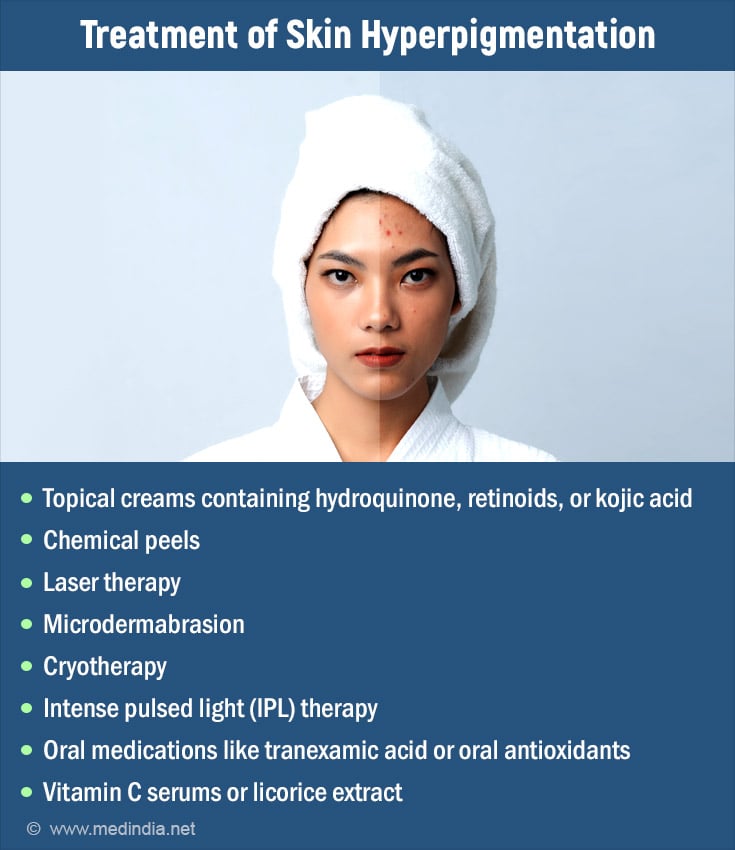
Laser Therapy:
Laser treatments are effective in targeting and reducing hyperpigmentation by specifically targeting melanin-producing cells in the skin. Laser therapy works by emitting concentrated light energy, which is absorbed by the melanin pigment, leading to its destruction. Over time, the treated areas lighten, resulting in a more even skin tone. Various types of lasers, such as Q-switched lasers and fractional lasers, may be used depending on the specific needs of the individual.Microdermabrasion:
Microdermabrasion is a non-invasive exfoliating treatment that removes the outermost layer of skin, including dead skin cells and pigmented cells. This procedure uses a handheld device to deliver fine crystals or a diamond-tipped wand to gently abrade the skin's surface. By promoting skin renewal and regeneration, microdermabrasion helps reduce the appearance of dark spots and improves overall skin texture and tone.Cryotherapy:
Cryotherapy involves the application of extreme cold to the skin using liquid nitrogen or other freezing agents. This treatment option is particularly effective for treating certain types of hyperpigmentation, such as age spots or sun spots. Cryotherapy works by destroying the excess melanin-producing cells, leading to the gradual fading of pigmented areas and the emergence of clearer, more even-toned skin.Prescription Medications:
In cases where hyperpigmentation is associated with underlying skin conditions such as melasma or post-inflammatory hyperpigmentation, dermatologists may prescribe oral medications or topical treatments to address the root cause of the pigmentation. These prescription medications may include oral contraceptives, corticosteroids, or medications containing ingredients like tranexamic acid or mequinol.Combination Therapies:
Combining different treatment modalities, such as topical creams, laser therapy, and chemical peels, can often yield optimal results in managing hyperpigmentation. Dermatologists may recommend a customized treatment plan based on the individual's skin type, the severity of the pigmentation, and their treatment goals.When considering treatment options for hyperpigmentation, it's essential to consult a qualified dermatologist or skincare specialist who can assess your skin condition, provide personalized recommendations, and monitor your progress throughout the treatment process. Additionally, practicing sun protection measures and maintaining a consistent skincare routine can help prevent the recurrence of hyperpigmentation and promote long-term skin health and clarity.
Hyperpigmentation Prevention
While treating existing hyperpigmentation is essential, taking preventive measures can also help minimize the risk of developing new dark spots. Here are some effective strategies for preventing hyperpigmentation:
Sun Protection:
Sunscreen is your first line of defense against hyperpigmentation. Apply a broad-spectrum sunscreen with a high SPF (Sun Protection Factor) daily, even on cloudy days or during winter months. Reapply every two hours, especially if you're outdoors or engaging in water activities. Look for sunscreens labeled "non-comedogenic" to prevent clogged pores and breakouts.Sun Avoidance:
Limit your exposure to the sun, particularly during peak hours when UV radiation is the strongest (usually between 10 a.m. and 4 p.m.). Seek shade whenever possible, and avoid prolonged sun exposure, especially without adequate sun protection. Wear protective clothing, such as wide-brimmed hats, long-sleeved shirts, and UV-blocking sunglasses, to shield your skin from harmful UV rays.Hormonal Management:
For individuals prone to hormonal-related hyperpigmentation, such as melasma, it's crucial to manage hormonal fluctuations effectively. Consult with a healthcare provider to explore options for hormonal balance, which may include medications, lifestyle modifications, or hormone replacement therapy (HRT). Women should also take precautions when using hormonal contraceptives or undergoing hormonal treatments.Skin Trauma Prevention:
Prevent skin trauma by adopting gentle skincare practices and avoiding harsh treatments that can trigger inflammation or injury to the skin. Be cautious when using exfoliating products, abrasive scrubs, or aggressive cleansing techniques, as these can exacerbate existing hyperpigmentation or lead to post-inflammatory hyperpigmentation (PIH). Opt for mild, non-irritating skincare products suitable for your skin type.Consistent Skincare Routine:
Establishing a consistent skincare routine tailored to your skin type and concerns is essential for maintaining skin health and preventing hyperpigmentation. Choose skincare products containing ingredients like vitamin C, niacinamide, retinoids, and antioxidants, which help inhibit melanin production, promote skin renewal, and protect against environmental damage. Cleanse, moisturize, and protect your skin daily to maintain its barrier function and resilience.Regular Skin Checkups:
Schedule regular visits with a dermatologist or skincare professional for skin assessments and evaluations. A dermatologist can identify early signs of hyperpigmentation or other skin issues and recommend appropriate preventive measures or treatments. Be vigilant in monitoring any changes in your skin, including new or worsening pigmented lesions, and seek prompt medical attention if needed.By incorporating these preventive strategies into your daily skincare routine and lifestyle habits, you can help safeguard your skin against hyperpigmentation and maintain a radiant, even complexion. Remember that prevention is key, and proactive measures can go a long way in preserving the health and appearance of your skin over time.
Hyperpigmentation Management Tips
- Maintain a consistent skincare routine using gentle cleansers and moisturizers suitable for your skin type.
- Avoid picking or scratching at acne or other skin lesions to prevent post-inflammatory hyperpigmentation.
- Consider incorporating brightening serums or products containing ingredients like vitamin C or niacinamide into your skincare routine to help fade dark spots.
When to See a Doctor: Hyperpigmentation
While hyperpigmentation is usually harmless, it's advisable to consult a dermatologist if:
- The hyperpigmentation is bothering you or causing significant self-esteem concerns.
- The patches are rapidly growing or changing in appearance.
- You notice any itching, burning, or discomfort in the affected areas.
- You have a new or unusual mole or growth on your skin.
A dermatologist can help diagnose the underlying cause of your hyperpigmentation and recommend the most appropriate treatment plan
In conclusion, hyperpigmentation is a common skin condition that can have a significant impact on one's appearance and self-confidence. Understanding the causes, symptoms, and treatment options for hyperpigmentation is essential for effectively managing and preventing this dermatological concern. By following proper skincare practices and seeking professional guidance, individuals can achieve a more even and radiant complexion.


